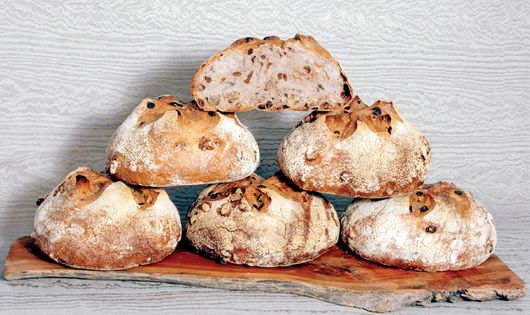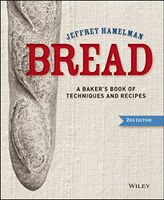Advertisement

Preparation info
- Dough Yield: About
25
loaves at 1.5 lb each - Difficulty
Medium
Appears in
Published 2004
The Olives Really Let Their Presence be Known in this Bread, and there are enough in each loaf that it would be hard to take a slice and not have the intense flavor of olives expanding in your mouth. The olives are drained, pitted if necessary (note that even olives that come “pitted” very often contain pits), and laid onto towels to dry for several hours or overnight. If they still seem moist, lay more towels on top and gently press to extract more of their liquid. Sliced olives or whole o


